Pie Charms From Clay: Earrings, Necklace, Etc.
by Clayalotte in Craft > Clay
1044 Views, 23 Favorites, 0 Comments
Pie Charms From Clay: Earrings, Necklace, Etc.

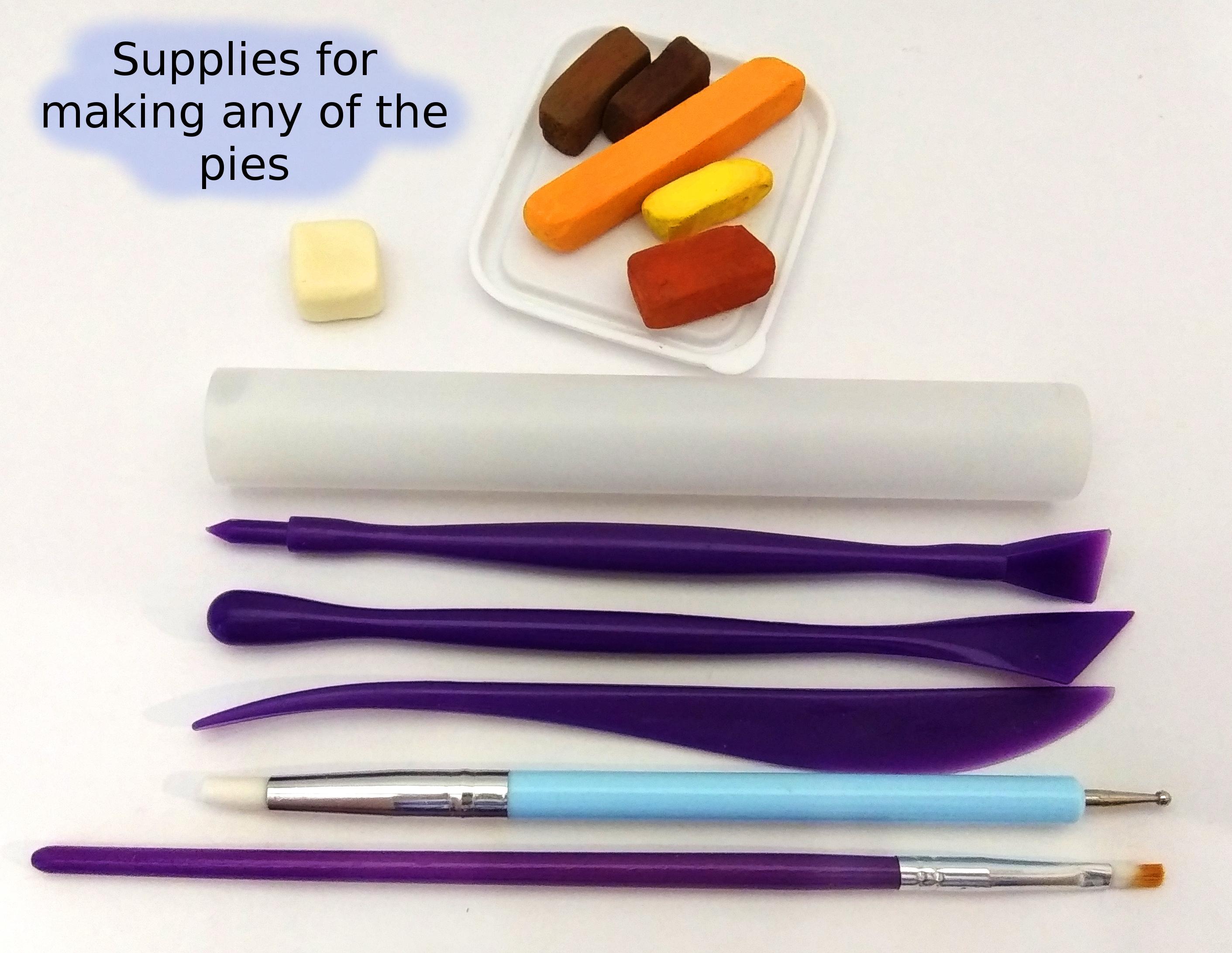



I have never attempted to make pies from clay until now, even though people are always encouraging me to make food themed jewelry. I have made little jams, little ice cream cones, little strawberries, and recently made these skillets with bacon and eggs earrings, but that was about the extent of my food jewelry. With pi day coming up, and pies on my brain, I decided to make some pie themed jewelry. (We actually went a little nuts at my house and made eight edible pies, but that is a whole 'nother story.)
Since I know that there are tons of pie favorites, I decided to try to make several different types so people could make what they themselves like. Feel free to skip to the pie of your choice; I will have them listed in the Supplies list.
These are just charms, so they can be used for earrings, keychains, whatever.
Supplies
I have listed the supplies that are specific to each pie under their own section, not here.
Here are the basic supplies for making all the pies.
- Clay in a dough color (polymer or air dry)
- Chalk pastels in light brown, dark brown, orange, yellow, and rust red
- Brush for applying chalk pastels
- Clay tools (roller, ball tool, stylus, knife - my favorites can be found here )
- Work space
- Liquid Clay (for polymer) or DecoArt Triple Thick (for air dry)
- Toothpick or pin
- Surface to mix liquid clay or Triple Thick on (I am using small plastic lids, not pictured)
- Kitchen Sponge
- Varnish (I use Duraclear Polyurethane, it is available in gloss, satin, matte, and ultra matte)
- Brush for Varnish
- Eye pins
- Round-nosed pliers (I use them to help put in the eye pins - mine are Cousin 3-in-1 pliers )
For Pie Pans:
You can use a bottle cap for a pie pan instead, or you can use clay. If you use clay, you don't have to have these specific colors; you can paint the clay your desired color, as I do. Feel free to use copper, black, or whatever color for your pans. I am making metal and ceramic pans here.
- Clay in white (or white paint, I am using Folk Art Titanium White)
- Clay in silver (or silver paint, I am using DecoArt EXTREME SHEEN Tin)
- Knife tool
- Nail polish bottle top
- Small ball tool (for ceramic dish)
- Brush (if using paint)
- Varnish (see above)
- Brush for Varnish
I decided it would be silly to repeat myself on making the crust for every pie, so for the Bottom Crust go to STEP 2 (all pies will need this). If you want a Top Crust, go to STEP 3. For a Lattice Crust go to STEP 4.
*Pies that commonly use a top crust: Apple, cherry, any type of berry pie.
*Pies that commonly use a lattice top: Cherry, blueberry, blackberry and other berry pies
Step 1: Pie Pans
Step 2: BOTTOM CRUST FOR ALL PIES
Step 3: TOP CRUST
Step 4: LATTICE CRUST
Step 5: Apple Pie
Step 7: Cherry Pie
Step 9: Coconut Meringue Pie
Step 10: Pumpkin Pie
Step 11: Blueberry Pie
Making Pie Pans

















You can skip this step if you want to use a bottle cap. I wanted my pies to be smaller than that, though, so I am making my own.
Roll out any color clay thinly, but not super thin. Your pan will need a bit of an edge.
Place the clay on top of the nail polish bottle and carefully press it around the edge. With the knife, cut the clay a little bit from the top of the bottle in as straight of a line as you can. Take off the excess clay.
Remove the clay from the top of the bottle. This is the pie pan.
Attach an eye pin by pushing it through the side. You can stick a small ball of clay on the end inside the pie pan to give it a firm hold if you wish ( pie filling will go on it anyway, so that will give it something to stick to if you want to skip this step).
With your fingers, gently pull/push the rim of the pan outwards from the top, making it have a slight slope.
For metal: the pan is finished
For ceramic: Using the small ball tool, make small lines on the sides of the pan all the way around.
Bake the clay or let it air dry.
Paint the clay with silver for metal or white for ceramic.
Bottom Crust







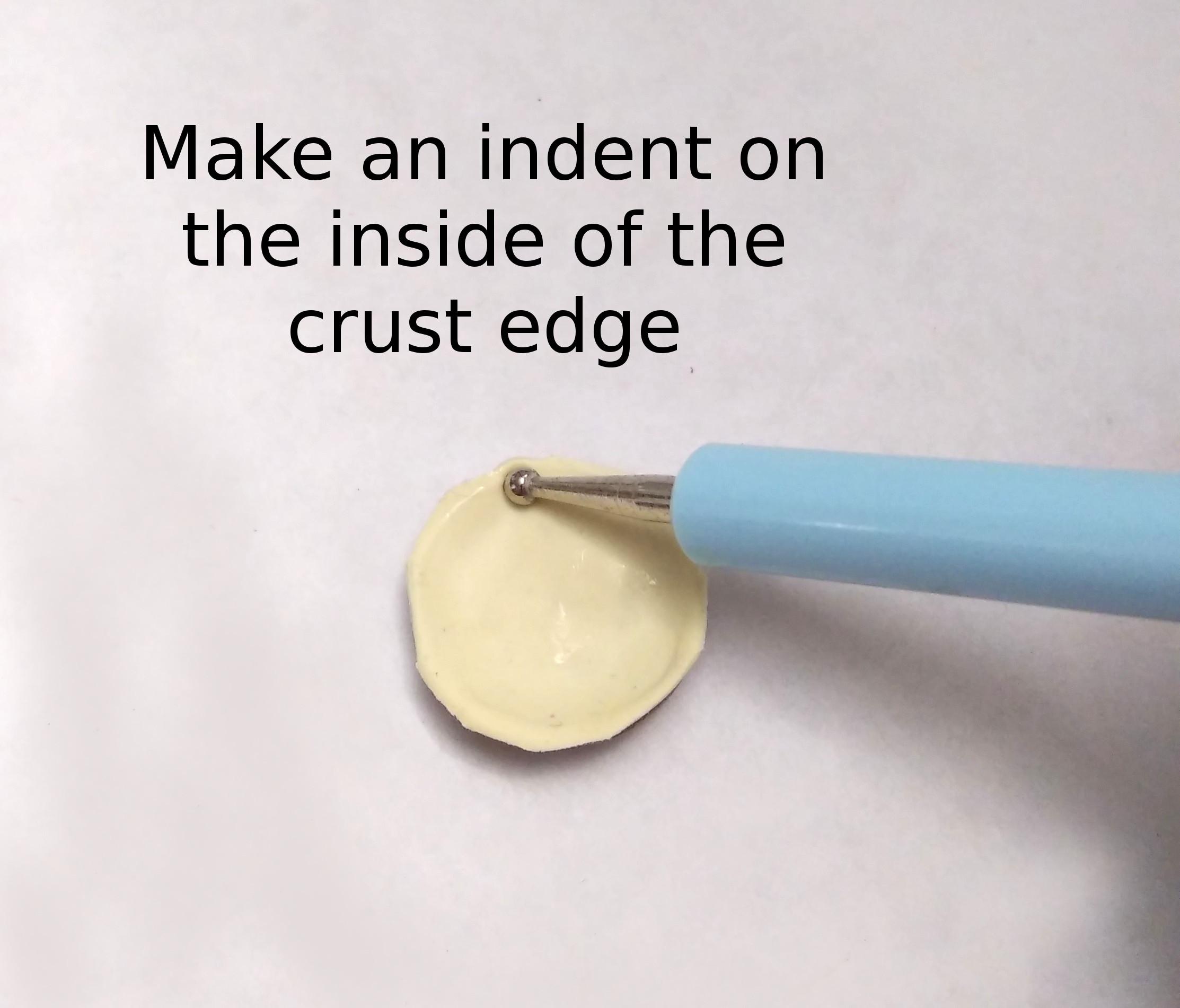














Roll out the dough colored clay thinly but not so thin as to have a hard time cutting it.
Cut out a rough circle shape that is larger than your pie pan. Don't be overly concerned with making it perfect; you will trim it later.
Press the dough into the pie pan, centering it as best as you can. Using your finger or a ball tool, press the dough up against the edges of the pan all the way around.
Flip the pie pan over and trim around the edge of the pan. Don't worry about trimming the edges too neatly.
Flip the pan back over and smooth the edges of the dough with your finger. Don't worry about the edges all being even and neat; a slightly rough and uneven edge will look more realistic.
For Cherry Pie and other open face or lattice pies (Pumpkin, Coconut, etc.)
Make a dent on the inside edge of the crust. Make another indent on the outside edge of the crust, next to the first indent. Make a third indent on the inside edge of the crust, on the other side of the outside dent. Continue the pattern all the way around.
Color the pie crust with chalk pastels. *Yellows and oranges will give the pie the golden glow from being baked. Browns and rust colors will give the pie a crispy look (or burnt, depending).
I start with yellow, then I go to brown. I go lightly with the brown, making sure to hit the raised edges. Next I add a light coat of orange, then a light coat of rust red. You don't have to use all these colors, just use whatever makes it look cooked enough for you. Lastly, I sometimes use a dark brown to give it a bit of an overdone look, because hardly any pie turns out perfect.
Top Crust






























Roll out the dough colored clay thinly. Cut a rough circle as you did for the bottom crust.
Now texture the clay using your sponge. This works best with a sponge that has been wet before and has dried out because it makes the sponge stiff, giving it a hard surface that will texture better. Just press the dough onto the sponge over and over until you decide that it looks like you want. Experiment with choosing different spots on the sponge for different texture.
Place the dough, texture side up, on the pie. Flip the pie over. Cut around the edge of the top crust.
Flip the pie back over. With the knife tool, cut out a piece of the top crust over top where you cut out of the bottom crust. Move the top crust so that it doesn't cover the open slice.
With the small ball tool, make a small indent in the side of the edge of the crust, pushing slightly outwards. Then make a small indent on the outside of the crust, pushing inwards. Go back to the inside and make an indent on the inside. Continue this pattern all the way around.
With the ball tool, make small dents in the surface of the top to give it a rumpled appearance.
Roughen the inside edge of the top crust with the pin.
Cut steam vent slits in the top of the crust using a pin. You can do whatever pattern you want, I chose the traditional five point star.
Coloring the Crust:
*Hint: Crusts have a golden orange undertone and then the raised crust parts will become more brown than the rest of the crust. Look up photos of crusts to help you color the pie.
To color the crust, I start with yellow pastel. I brush it lightly over the whole pie crust, giving it a slight glow.
Next I use a light brown. I dust it just over the top, hitting the raised bits of the crust. I color the raised bits on the crust edge because they will brown quickly in an oven and almost always have browned more than the other parts.
Then use rust red. This helps add to the cooked look. Go easy on this color.
Follow up with orange to increase the glow. Just dust around until you decide you like it.
Now use dark brown in small smidgens (bits) on just some of the raised parts of crust. This is those parts that got a little too browned because they were higher than the rest of the pie. I know you don't think it is pretty, but it helps it look realistic because hardly anyone bakes a perfect pie. Do some of the crust edges with it as well. Go lightly with it so you don't end up with burnt pie.
The crust is finished!
Lattice Crust

















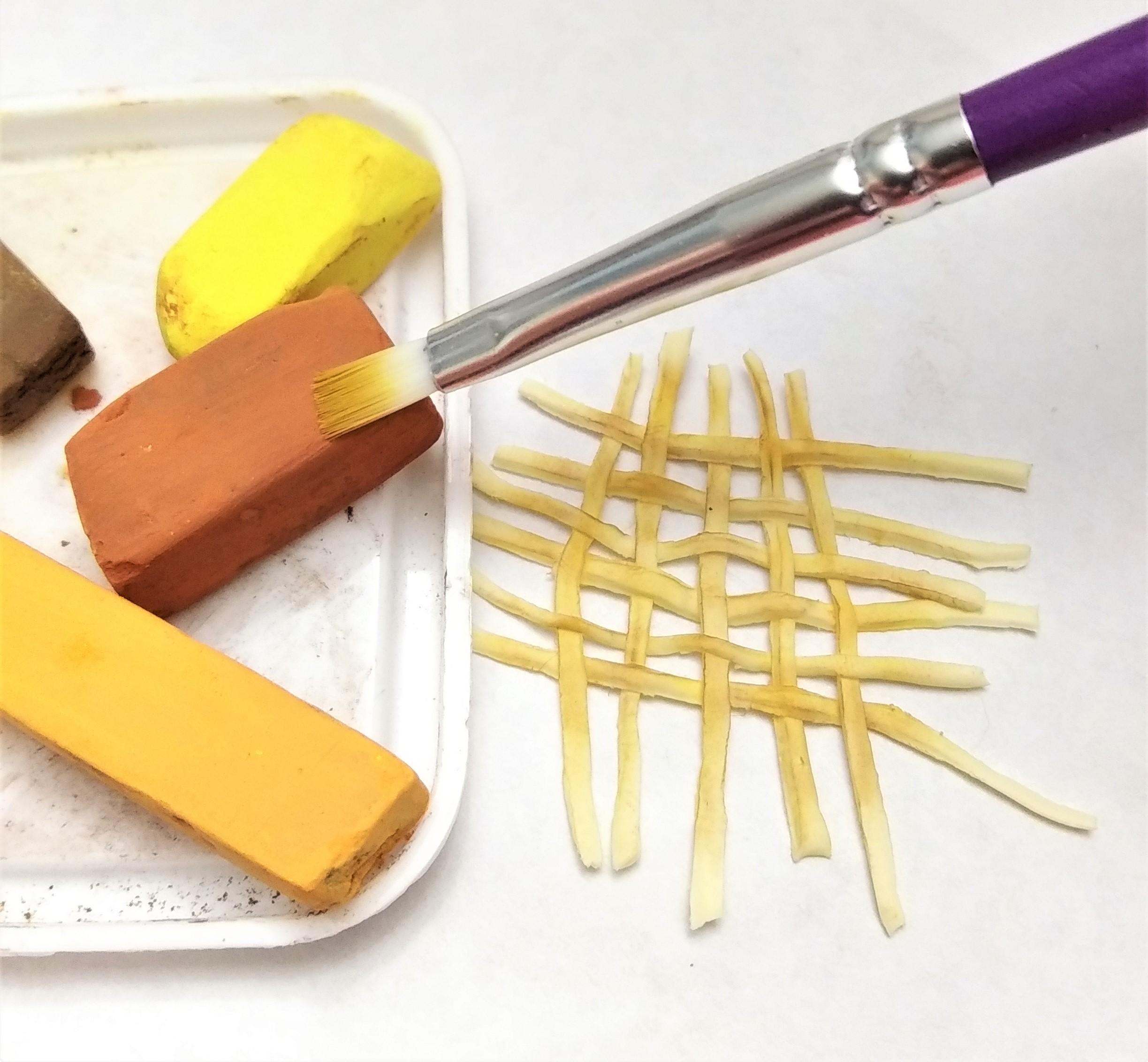


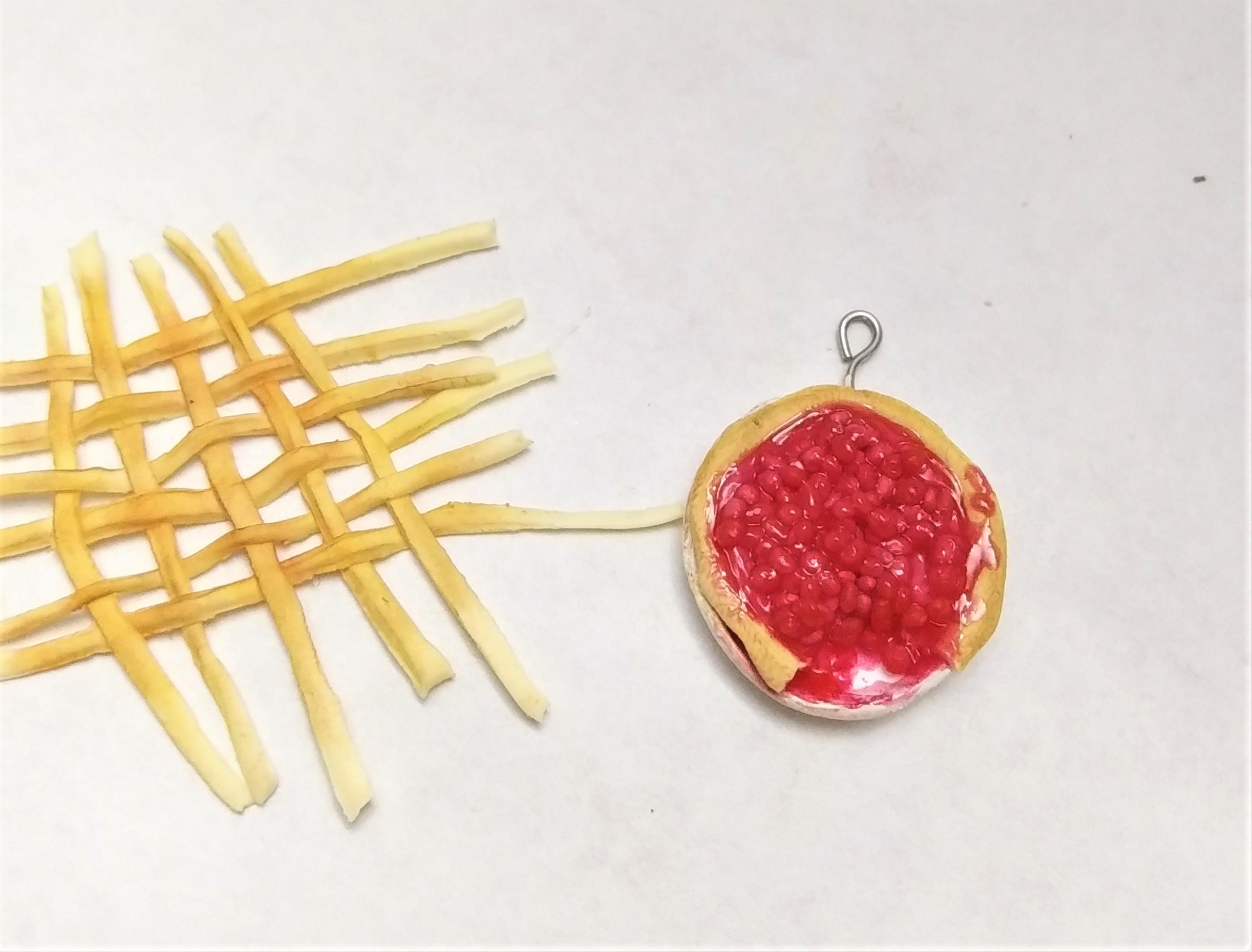




Roll out the dough colored clay. Cut very thin slices (mine should have been a tiny bit thinner) out of the clay.
Lay two strips out, crossing them. Leave a bit of an end on each one before crossing them. My horizontal strip is on top of the vertical strip.
Lay a second vertical strip on top of the horizontal strip.
Lay a third vertical strip under the horizontal strip.
I did five strips in this pattern.
Now flip up all the vertical strips that are under the horizontal strip. Lay another strip horizontal, going under the strips you flipped up. Put the flipped up strips back down. Do the next line the same way; flip up the strips that are under the horizontal strip, place another horizontal strip, and then flip the strips back down.
I had six horizontal strips and five vertical strips.
Color the lattice. Start with yellow chalk pastel, lightly coloring it. Next use brown, making sure to dust the parts of the lattice that stick up over other parts. Then I use orange, and then a very light coat of rust red.
Place the lattice on top of your pie. Squish it a bit to make it stick, then trim the lattice to fit the pie.
Tear/trim off the lattice that is over where the pie was sliced. It should look a bit rough.
Apple Pie












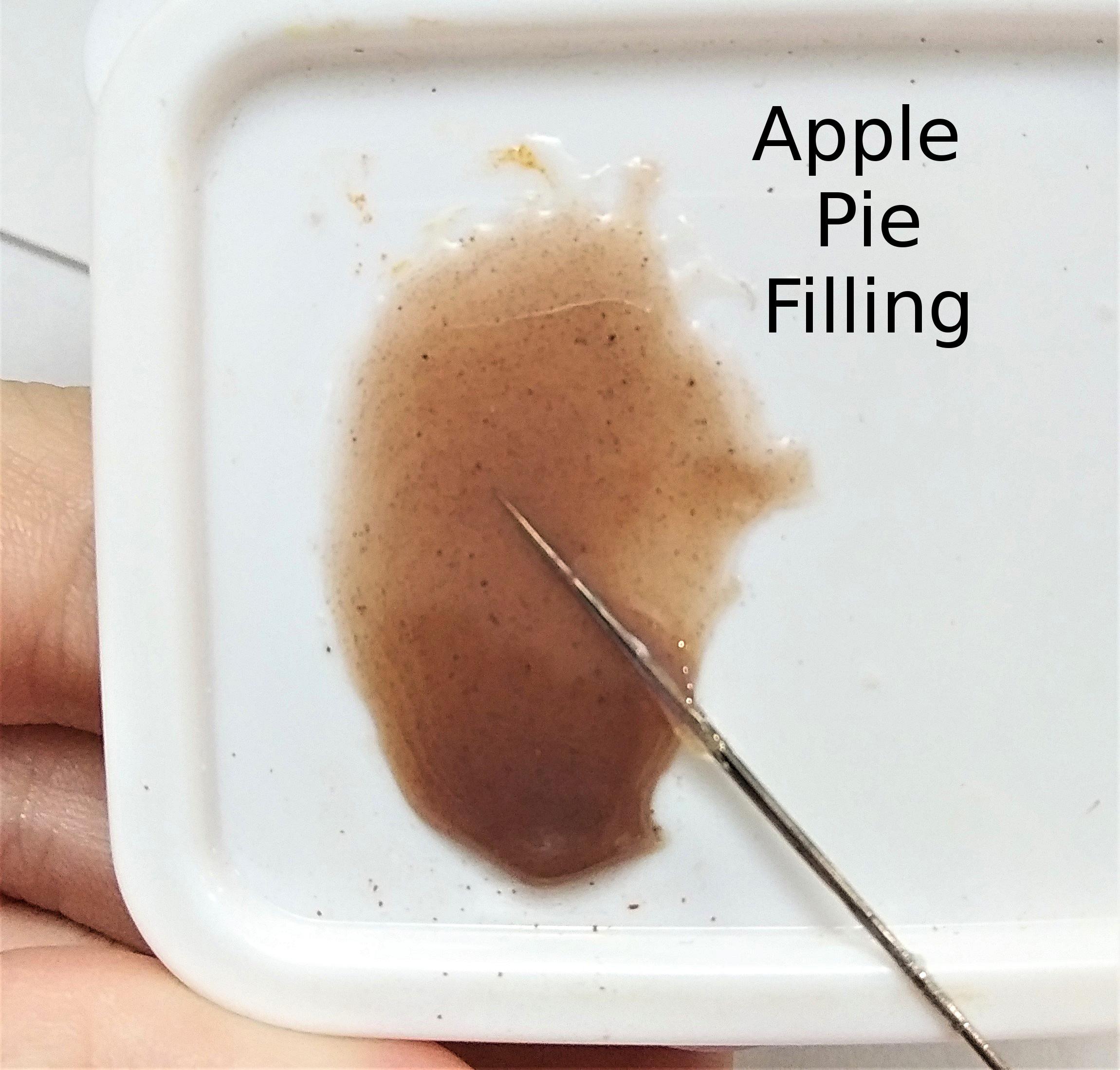
Specific Supplies for Apple Pies:
- A yellow-ish brown-ish orange clay for making apples.
- Chalk Pastels in orange, rust, and brown
-All other supplies listed in the beginning for all the pies
Step One: Filling:
With the yellow-brownish clay, pinch off tiny amounts and flatten them slightly. These are the apples. Don't worry about their shape too much; apples in apple pie stick out random directions and don't show their shape. Make a whole lot of them (see photo for an idea how big your pile should be).
For air dry clay, let dry. For polymer clay proceed to the next part in making the filling.
Dip out the Triple Thick or Liquid Clay onto a surface that you can mix on. Add a little bit of orange chalk pastel to the liquid, and mix it in well.
Add a larger bit of brown chalk pastel to the liquid, mixing until mostly incorporated. A few bits here and there will look like the cinnamon in the pie mixture.
Add another bit of the rust red pastel and mix in.
The color should be a brownish reddish color, looking brown to directly look at it, but when looked through it should glint a reddish pink. If you are unsure, google apple pie photos and pay attention to the color of the filling. Of course, I am basing this off of the apple pie that I make, so yours might be slightly different.
The filling is ready.
Filling the Pie


















See Step Two: Bottom Crust then proceed with these directions.
With a bit of clay (any color, scraps are good for this) press a little bit into the pie pan that has the bottom crust. Don't make it come up over the edge of your pie crust because then your pie will look overly filled. Cover up your eye pin, but don't fill the whole pan. We will be cutting a slice out of it, so make sure to leave room for that. You can make the surface of this clay slightly bumpy and uneven.
Cut a slice out of the pie crust. Using a pin or toothpick, roughen the edges of the cut by poking and twisting the toothpick. Just kinda tear up the dough so it looks like it has been cut.
Cover the clay you just added with the Triple Thick or Liquid Clay mixture. Then begin sticking apples on top of it. Make it random and don't worry about them sticking up - an uneven surface is a trademark of apple pies. Save some apples for sticking in the side.
Add a little bit of the filling to the bottom of the pan so it is spilling out.
For the next step, use Step 3: Top Crust
After coloring the top crust, get out the Triple Thick (or Liquid Clay) mix. Dab a bit on the slits in the top to make it look like the filling leaked out as the pie cooked. Then touch up where the pie slice was cut out.
Now the pie is finished! All that is left is to varnish the pie.
Polymer clay: you don't have to varnish the pie.
Air dry clay: you NEED to varnish the pie.
Use whatever sheen you want (gloss, satin, matte). I am using matte.
Cherry Pie






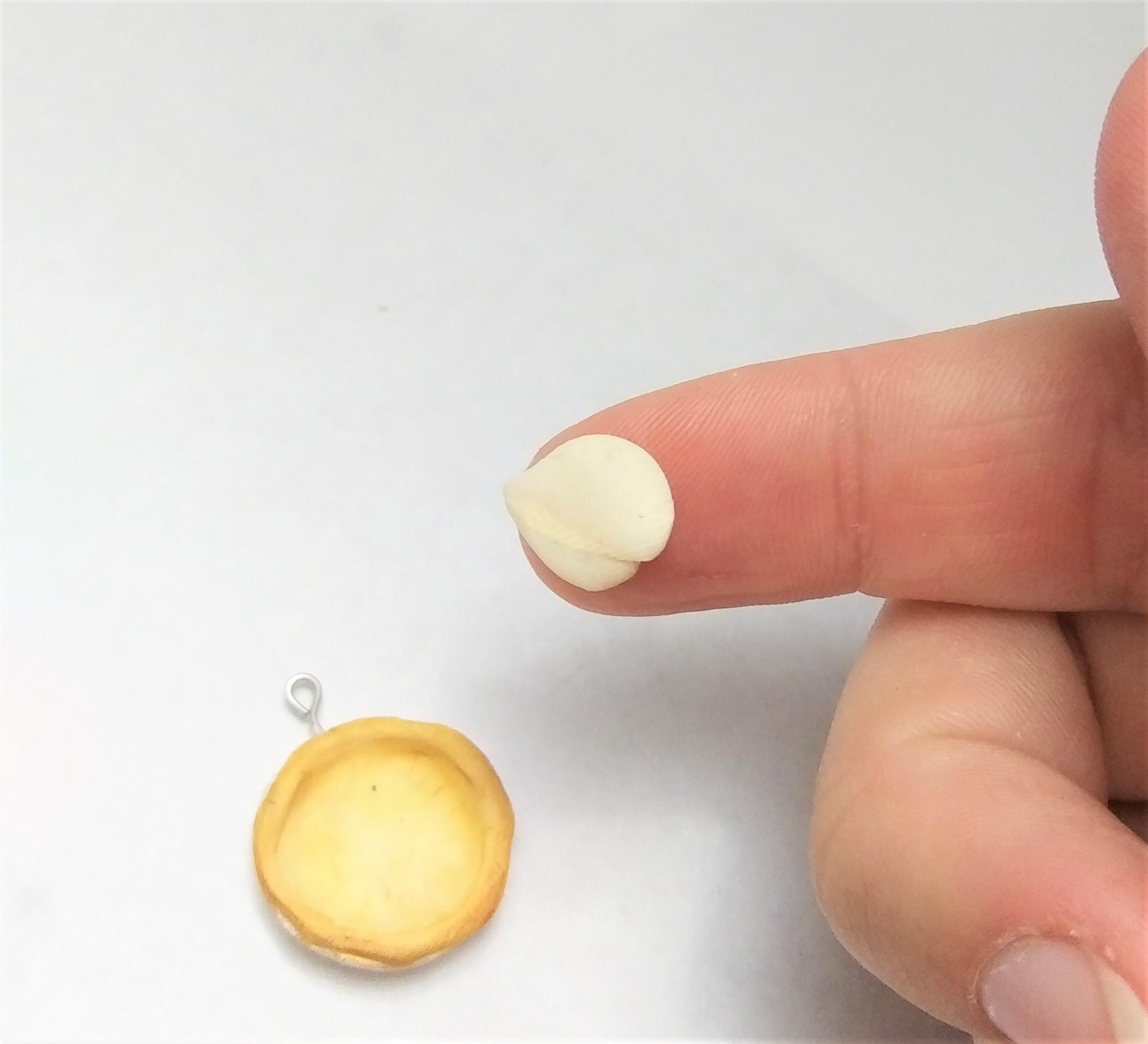






Supplies for Cherry Pie:
-Red clay
- Acrylic paint in red (I am using Anita's True Red)
- Dark brown pastel
Begin with Step 2: Bottom Crust.
With the red clay, roll out tons of tiny little red cherries. Don't worry about them being perfectly round, many cherries end up flat due to the process of removing the pits.
Dip out some of the Triple Thick. Add a little bit of the red paint and mix thoroughly.
Add a bit of scrap clay to the bottom of the pie crust. Now would actually be the time to cut a slice out of it, but I forgot and did it later.
Cover the base with cherry pie filling (Triple Thick mix).
Then I remembered to cut the slice out...
Roughen the edges of the slice out with a pin.
Cherry Pie Filling and Finishing Up

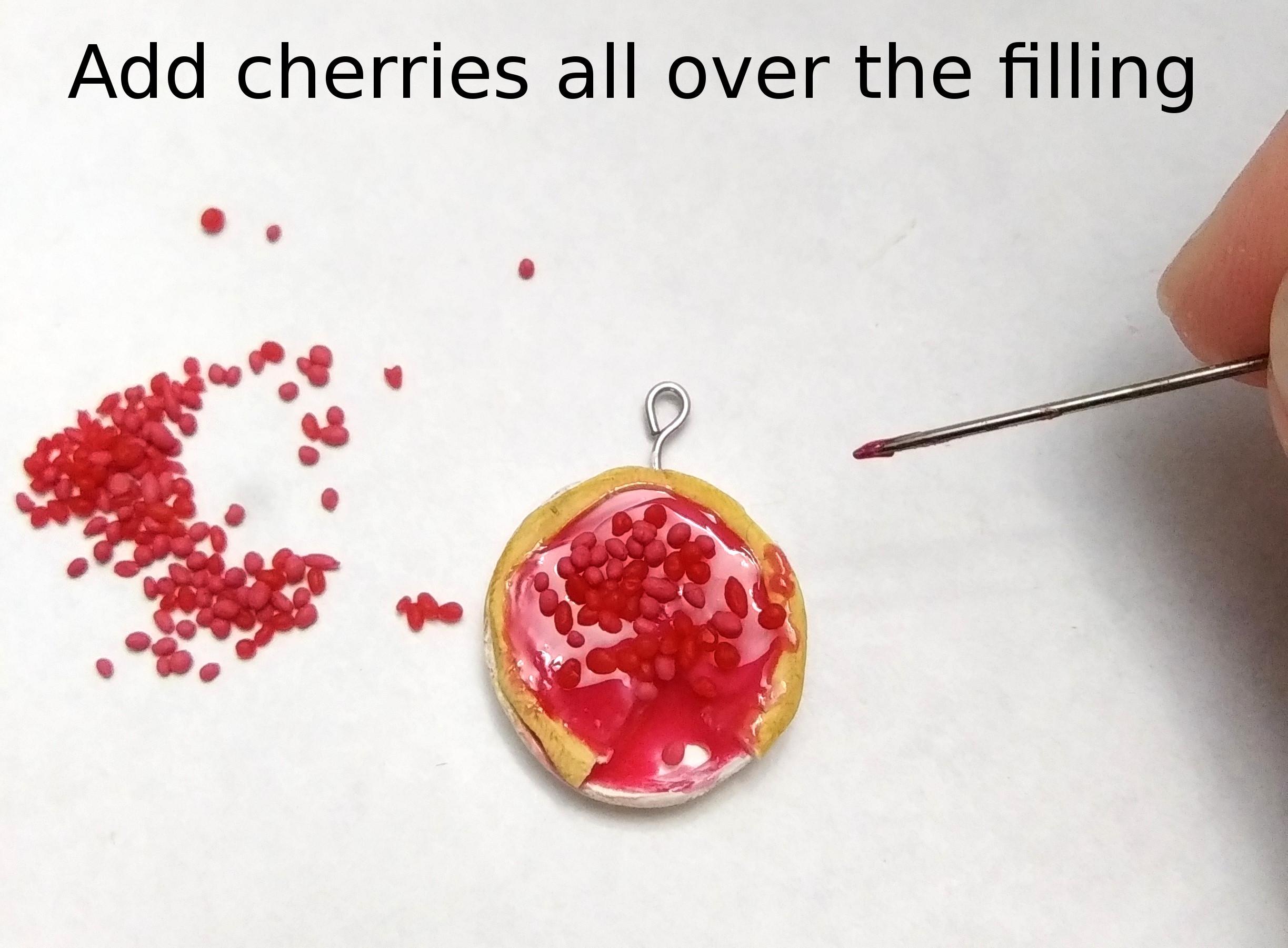









Add filling spilling out of the pie. Cherry pies tend to spill a lot, so go a bit crazy with it.
Add the cherries all over the filling. Then add a bit more filling here and there on the cherries.
Proceed to Step 4: Lattice Crust
Drip some filling onto the lattice and the edges of the pie.
Add a little bit of brown pastel to the cherry pie filling mixture. Put some of this on the lattice and edges of the pie. You can put drips of it on the sides of the pan to add to the realism.
Now your cherry pie is finished. You need to varnish it for air dry clay, and you can varnish if it you want for polymer clay (it isn't necessary).
Coconut Meringue Pie
























Supplies for Coconut Meringue Pie:
-Clay Icing *
- Acrylic paint in light yellow and white
- chalk pastels in brown, dark brown, orange, and rust red
*For the Coconut Meringue Pie, I will be using Clay Icing. It is not hard to make with polymer or air dry clay, but since there are so many Youtube videos out there about it, I won't reiterate here (Just google 'polymer clay icing' or 'air dry clay icing'). Your icing should be thick enough to hold a shape.
Begin with Step 2: Bottom Crust
Cut out a pie slice from your bottom crust. Roughen the edges of the cut with a pin.
Add your yellow colored icing to the pie, spreading it thickly. Don't be worried about it being smooth or not; meringue will go on top. Make some of the filling spilling out the sides.
Add a little bit of white paint to a bit of clay icing. Mix thoroughly. This is the meringue.
Put meringue all over the pie filling. To make it have peaks, take a pin or a toothpick and dip it in and out of the meringue, swirling occasionally.
Color the meringue by brushing yellow and orange chalk pastels lightly over the surface. Just brush the peaks with brown and a tiny bit of dark brown.
Varnish the pie with your choice of varnish.
The coconut pie is finished!
Pumpkin Pie















Supplies for making Pumpkin Pie:
- Clay Icing*
- Dark brown chalk pastel
- Acrylic paint in brownish orange (I am using Pueblo by Folkart) and white
*For the pumpkin pie, we will use Clay Icing just like for the coconut pie. Google 'polymer clay icing' or 'air dry clay icing' and you will get plenty of stuff showing you how to make some.
Begin with Step 2: Bottom Crust.
Mix a brownish orange color into the clay icing. Add brown pastel until you get more of a brown with orange undertones (I know that mine looks more like peanut butter in the photos, but that isn't really what it looks like when it is done).
For air dry clay: Let the pie sit a bit until the surface is a bit dry. Then press the scrubby side of a kitchen sponge onto the pie to make a textured surface.
For polymer clay: Texture the pie by lightly pressing to the scrubby side of a kitchen sponge. You may need to bake it a tiny bit so the clay icing is not totally wet.
Whip Cream:
If you want to top your pumpkin pie with whip cream, mix a little bit of white acrylic into clay icing. Make a dollop of whip cream on the pie, swirling it around a bit so it makes a point when you pull away from it.
To add nutmeg, add a little bit of brown pastel flakes to the whip cream.
Varnish the pie with your choice of varnish.
The pumpkin pie is finished.
Blueberry Pie

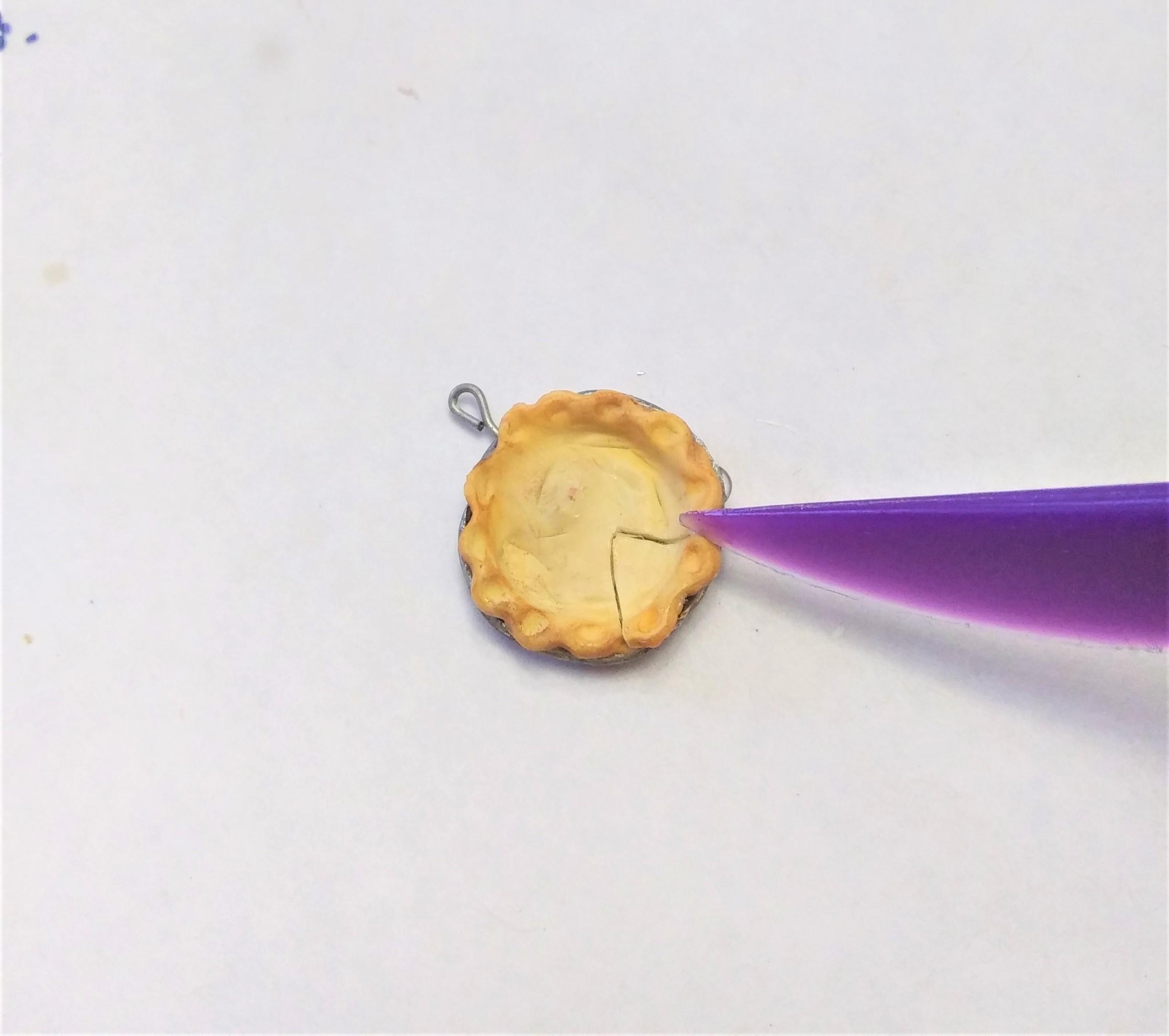

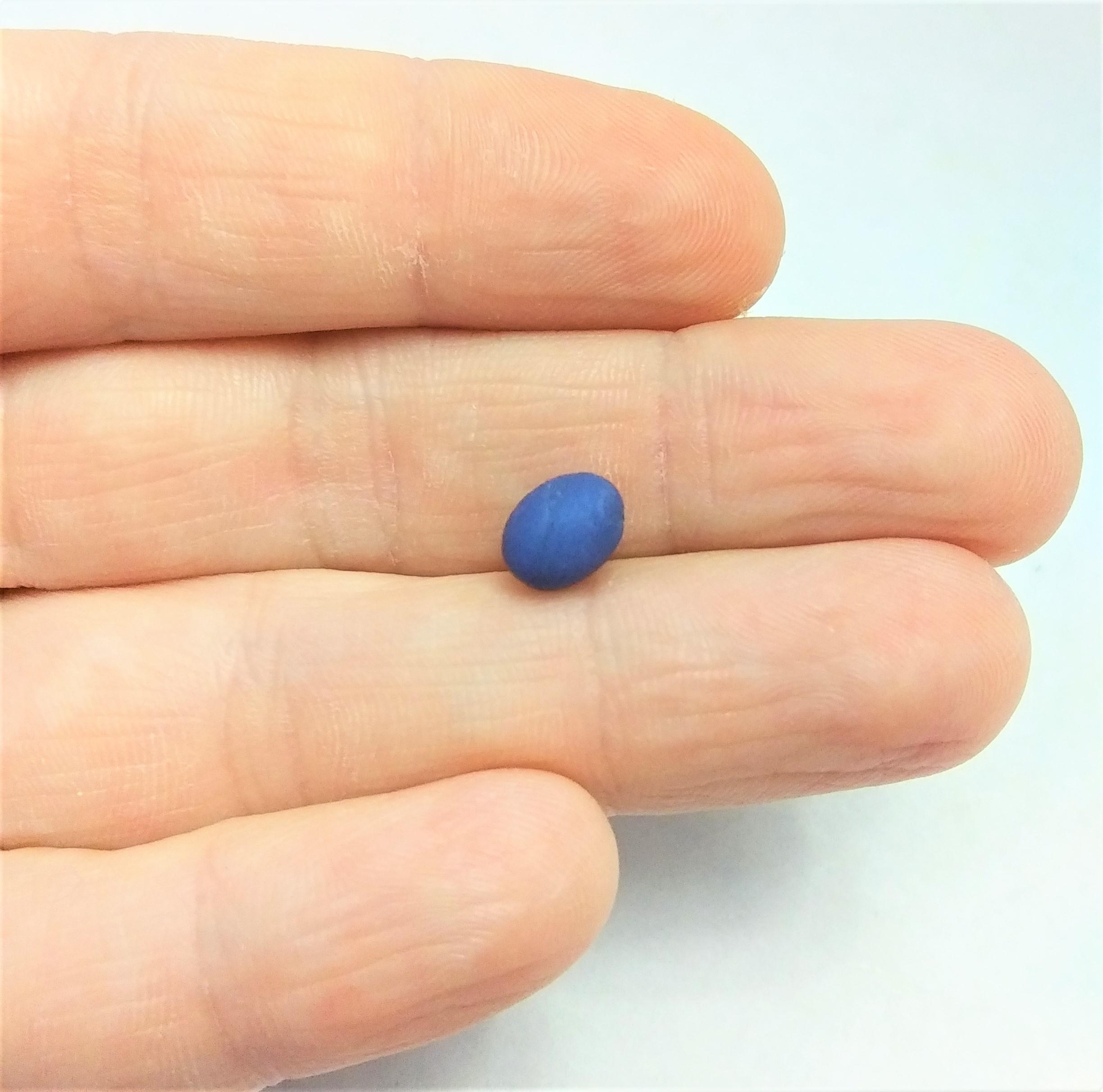









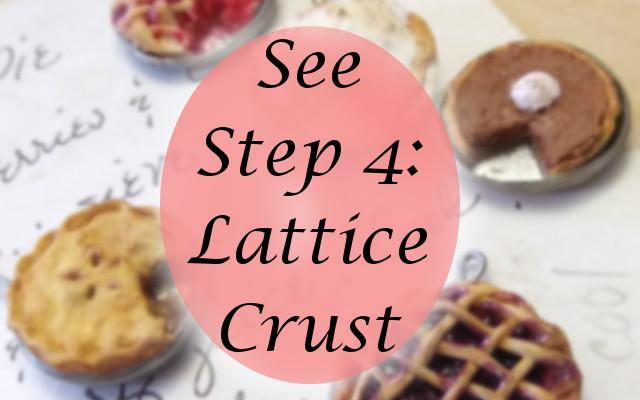





Supplies for making Blueberry Pie:
-Clay in a dark blue
-Acrylic paint in a dark blue (I am using English Navy by Apple Barrel) and red (I am using True Red by Anita's)
Begin with Step 2: Bottom Crust
Cut a slice out of the pie crust.
With the dark blue clay, roll out lots of teeny tiny blueberries. Don't fret it they are not totally round, they just need to give that appearance.
Mix two small dots of the red and blue paint together to create a deep reddish purple. Mix the blueberries into the purple filling and then spoon them into the pie. Make a bit of the filling spilling out into the pan.
Proceed to Step 4: Lattice Crust
Add bits of filling spilling out onto the lattice and the edge of the crust. Brush a bit of dark brown pastel onto the filling bits that have browned a bit too much in the oven.
Varnish the pie and it is finished.
Enjoy Your Pie

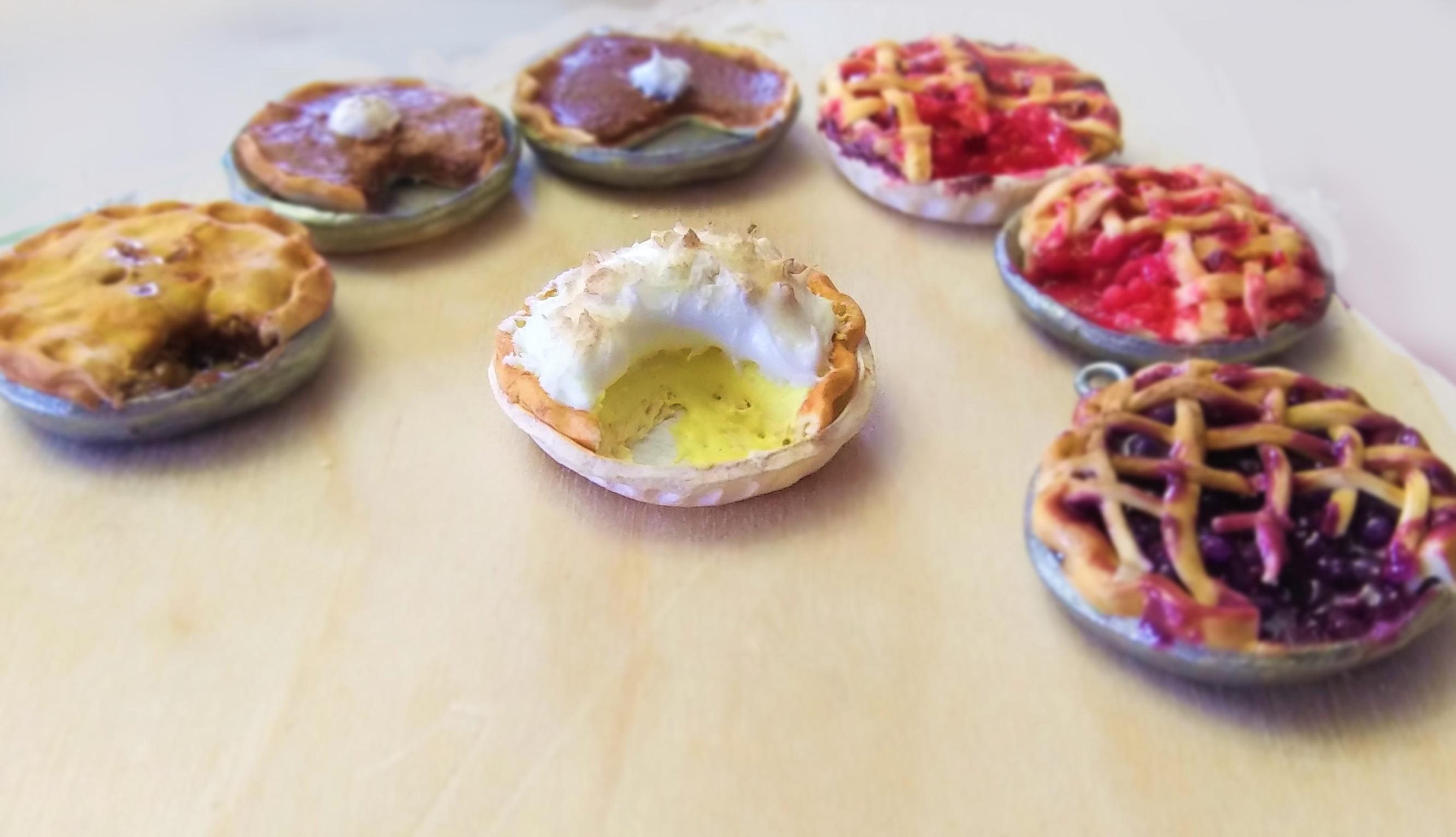
I hope you will enjoy your pie charms, and I hope you enjoyed making them. It was definitely something new for me to make.
You can use these for keychains, earrings, necklaces, bracelets, hang from your car mirror, just anything that you can attach a charm to. These pies would also be great for miniature scenes.
I'm entering the Pi Challenge with these, so if you liked them please vote!
Have a great day!